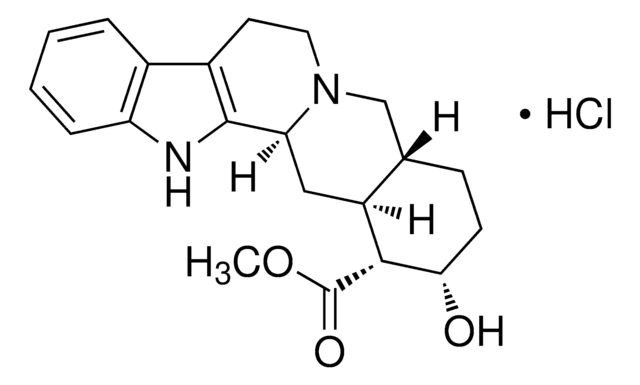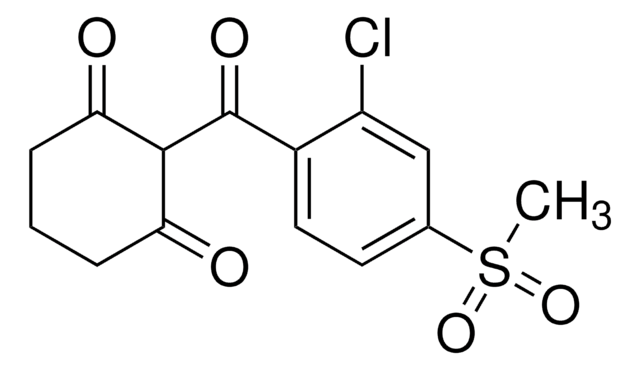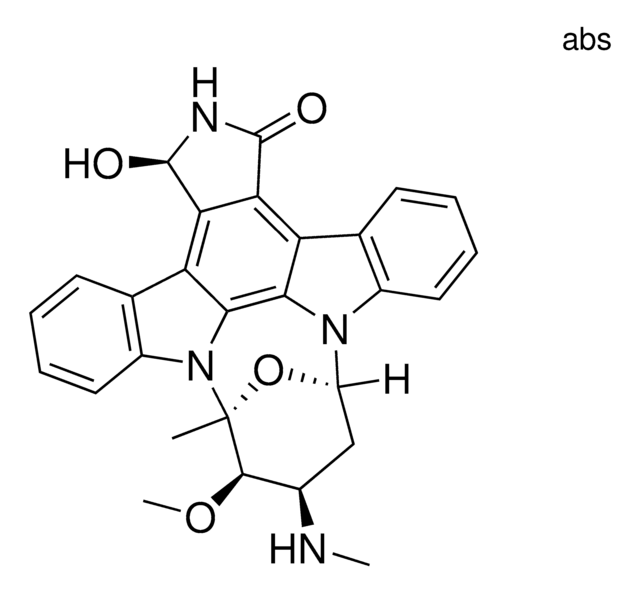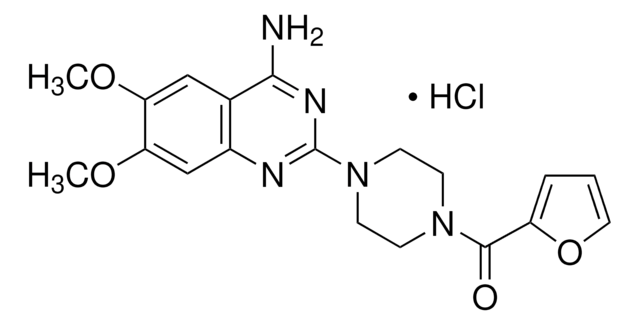SML0269
Nitisinone
≥95% (HPLC)
Synonyme(s) :
2-(2-Nitro-4-trifluoromethylbenzoyl)-1,3-cyclohexanedione, 2-[2-Nitro-4-(trifluoromethyl)benzoyl]cyclohexane-1,3-dione, NTBC, Nitisone, SC 0735
About This Item
Produits recommandés
Niveau de qualité
Essai
≥95% (HPLC)
Forme
powder
Couleur
white to brown
Solubilité
DMSO: ≥5 mg/mL
Température de stockage
−20°C
Chaîne SMILES
[O-][N+](=O)c1cc(ccc1C(=O)C2C(=O)CCCC2=O)C(F)(F)F
InChI
1S/C14H10F3NO5/c15-14(16,17)7-4-5-8(9(6-7)18(22)23)13(21)12-10(19)2-1-3-11(12)20/h4-6,12H,1-3H2
Clé InChI
OUBCNLGXQFSTLU-UHFFFAOYSA-N
Informations sur le gène
human ... HPD(3242)
Vous recherchez des produits similaires ? Visite Guide de comparaison des produits
Application
- to induce liver injury
- to treat Ixodes scapularis tick cells to inhibit the activity of hydroxyphenylpyruvate dioxygenase
- in supplemented water to block the accumulation of toxic metabolites in human hepatocyte engrafted mice
- to study its effect on bacterial pyomelanin production
Actions biochimiques/physiologiques
Code de la classe de stockage
11 - Combustible Solids
Classe de danger pour l'eau (WGK)
WGK 3
Point d'éclair (°F)
Not applicable
Point d'éclair (°C)
Not applicable
Faites votre choix parmi les versions les plus récentes :
Déjà en possession de ce produit ?
Retrouvez la documentation relative aux produits que vous avez récemment achetés dans la Bibliothèque de documents.
Notre équipe de scientifiques dispose d'une expérience dans tous les secteurs de la recherche, notamment en sciences de la vie, science des matériaux, synthèse chimique, chromatographie, analyse et dans de nombreux autres domaines..
Contacter notre Service technique








